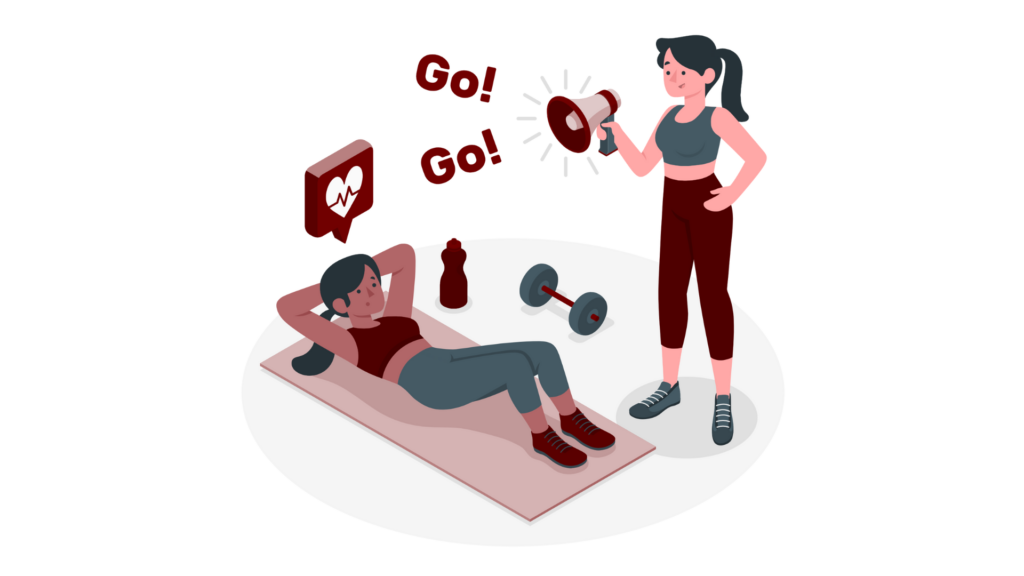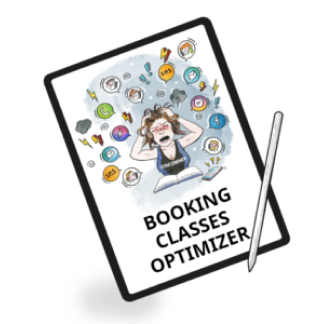Embarking on a fitness journey can often lead you to the question about how much does a personal trainer costs. Understanding the financial commitment is crucial before diving into a tailored fitness regime.
Across the United States, the fitness professional personal trainer cost per hour averages between $40 to $70, according to a recent survey by the National Strength and Conditioning Association. This range, however, is influenced by various factors including geographical location, the trainer’s qualifications, and the training setting: be it at a gym, in-home, or online, for example via website or personal training software.
For instance, personal trainer fees per hour in metropolitan areas such as New York City or San Francisco can skyrocket to $100 or more, highlighting the premium placed on specialized fitness coaching in urban centers.
On the flip side, group classes and training sessions or hiring less experienced trainers can substantially reduce costs, offering a more budget-friendly option for those pondering how much are personal trainers really worth the investment.
Curious about the cost of hiring a personal trainer? You’re not alone.
What is a personal trainer?
For many people, a personal trainer is not a profession at all, but a way of life. He is a highly skilled specialist who helps clients achieve their fitness and health goals. He is not limited to just one role, for he has many talents and skills that he uses in his daily work.
His work involves providing personalized training programs that take into account the individual’s needs, current health status and goals. Personal trainers often have knowledge of both anatomy, physiology and training principles, which allows them to effectively support their clients.

Personal trainers can use many facilities to provide better services to their clients. By choosing, for example, gym CRM or the best personal trainer app, they can manage workouts, schedule appointments or provide constant contact with clients. You can also use WodGuru as gym membership management software for personal trainings.
Personal trainers not only shape the body of their charges, but also build their confidence and motivation, which leads to more and more success. The profession of personal trainer is dynamic and demanding, but also very rewarding. Personal trainers have the opportunity to work with people of all ages and fitness levels, helping them to improve their health, fitness and well-being.
Read also about: how to start a personal training business to get more information!
Personal trainer – a specialist who has many talents. What exactly can a qualified personal trainer do?
- Arranging a diet – he often takes on the role of a nutritionist, advising on nutrition, helping you lose extra pounds or gain weight, if you care to do so. It is worth choosing such a trainer who will know how to arrange a personalized diet and convince you to change your eating habits.
- Conducting workouts – he should be your exercise specialist, supporting you while you work on your health and figure. It is the personal trainer who knows how to work with different people, choose the right exercises or indicate which equipment is worth exercising on.
- Motivate the client – a personal trainer can also be a motivator when a crisis comes. A good trainer knows the basics of psychology, making the client want to keep going!
- Being a workout mentor – yes, yes! It may sound strange, but a personal trainer must be a great organizer, able to plan activities and arrange everything so that it pins together.
Understanding personal fitness trainer costs
Individual personal training sessions is a specialized form of guidance provided by certified professionals personal fitness trainers, aimed at enhancing an individual’s health and fitness. Certified personal trainers work closely with their clients to establish their fitness goals, develop effective workout plans, and provide motivational support.
Their expertise covers various aspects of physical fitness, including strength training, cardiovascular conditioning, flexibility, and nutrition. Fitness coaches not only design tailored exercise programs but also educate clients on proper exercise techniques to maximize results and minimize injury risks.
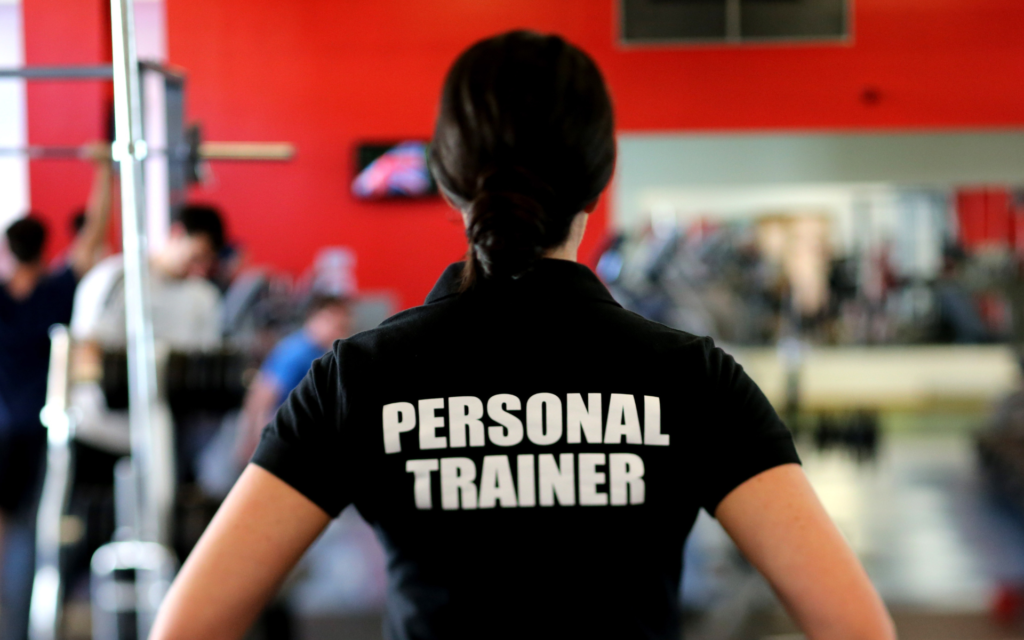
Professional trainers offer a wide array of services that cater to the specific needs and objectives of his clients. Key services include:
- Fitness assessments: Evaluating a client’s current fitness level, body composition, and exercise capabilities to establish a baseline and track progress.
- Goal setting: Helping clients set achievable fitness goals, whether it’s to lose weight, muscle gain, improved athletic performance, or enhanced overall health.
- Customized workout plans: Designing structured personalized workout plans that align with the client goals, fitness level, and any medical considerations.
- Instruction on proper techniques: Teaching correct exercise forms to prevent injuries and ensure optimal results.
- Nutritional guidance: Providing advice on diet and nutrition to complement the physical training regimen.
- Motivation and accountability: Keeping clients motivated and accountable, which is essential for sustained commitment to a fitness plan.
- Rehabilitation and special needs: Assisting in recovery from injuries and catering to special conditions such as pregnancy or chronic diseases.
Gym vs. home training – how does this affect the cost of a personal trainer?
When choosing between training at a gym and training at home, there are several factors to consider. This is especially true if you decide to use a personal trainer. Personal training rates can vary, depending on where you exercise.
Training at a gym usually offers access to a wide range of equipment and facilities, potentially making workouts more varied and challenging. Gyms can also provide a more social environment, which can be motivating for some people. But you need to remember about average gym membership cost.
Training at home, on the other hand, provides a higher level of comfort and privacy. This is ideal for those who prefer a more personalized environment or have a busy schedule that makes traveling to the gym impractical.
Although the variety of equipment may be more limited compared to a gym, home trainers are skilled at developing effective workouts using minimal equipment and even body weight exercises. Home sessions can also be customized to fit any space and schedule, providing a flexible fitness training option.

Gym vs. home training from a personal trainer’s perspective
Both gym and home training have their advantages and disadvantages from a personal trainer’s perspective.
Gym:
- Advantages: Access to a wide range of equipment, opportunity to get help from other trainers, motivating atmosphere. You can also take part in group training sessions in local gym, which will be carried out by great personal trainer.
- Disadvantages: High cost of membership, crowds of people, noise, need to commute. Fitness industry is not always a suitable place for people who are ashamed to be among others.
Training at home:
- Advantages: Lower cost, convenience, ability to exercise at any time of day, no crowds.
- Disadvantages: Lack of access to equipment, lack of motivation, easy to put off exercising.
The choice of training location depends on the client’s individual preferences and financial capabilities. A personal trainer can help the client choose the best option for their needs.
How much does a personal trainer cost?
The average cost of personal training services in the US is between $50 and $100 per hour or per session. Before working with a personal trainer, it is important to compare prices and choose a trainer who offers services that fit your needs and budget.

How much a personal trainer costs varies depending on several conditions, with the average personal trainer cost changing from region to region. Also the cost of hiring a fitness professional’s personal trainer in the United States can vary significantly based on location, trainer qualifications, and the training format chosen.
Average cost of a personal trainer in the U.S. depending on training method
How much does a personal trainer cost per hour? The cost of hiring a personal trainer in the U.S. can vary significantly depending on the specific training method chosen. Each type of training offers unique benefits and targets different needs, which can also influence the personal trainer average cost.
Average cost of a personal trainer in the U.S. depending on training method:
| Training Method | Typical Urban Area Cost | Typical Suburban Area Cost | Typical Rural Area Cost |
|---|---|---|---|
| Standard One-on-One | $60 – $100 | $50 – $80 | $40 – $70 |
| Specialized Training | $80 – $120 | $70 – $100 | $60 – $90 |
| Small Group Training | $30 – $50 per person | $25 – $45 per person | $20 – $40 per person |
| High-Intensity Training | $70 – $110 | $60 – $90 | $50 – $80 |
| Senior Fitness Training | $50 – $80 | $40 – $70 | $35 – $65 |
| Youth Fitness Training | $50 – $80 | $40 – $70 | $35 – $65 |
| Functional Training | $55 – $85 | $45 – $75 | $40 – $70 |
| Pre/Postnatal Training | $60 – $90 | $50 – $80 | $45 – $75 |
| Sports Performance Training | $65 – $105 | $55 – $85 | $50 – $80 |
Average monthly cost of experienced trainer
Some trainers and gyms offer monthly memberships that allow clients to work with a personal trainer several times a week. This can be one of the most cost-effective methods, particularly for those committed to regular workouts. Monthly rates can range from $200 to $600 or more, depending on how frequently the client trains and the level of personalized attention provided.
Video: Personal Training Pricing | How To Figure Out Your Rates
How much is personal trainer? Many personal trainers offer packages that include multiple sessions, ongoing support or group setting at a discounted rate. For example, a package of 10 sessions could cost anywhere from $350 to $600, depending on the trainer’s rates.
How much to charge for a workout plan? For example, what is 12 week personal training program cost in the market reality? These package deals often motivate clients to commit to their fitness goals over a longer period while providing some savings compared to the per-session cost.
Average cost personal trainer gets per hour
On a per-session basis, personal trainers typically charge between $40 and $70. However, rates can climb to $100 or more in larger cities or for trainers with specialized expertise. These sessions usually last from 45 minutes to an hour. Some trainers may offer shorter sessions at a reduced rate, which can be an attractive option for those with tight schedules or specific budgetary limits.
Average session cost personal trainer in US
| Typical Urban Area Cost | Typical Suburban Area Cost | Typical Rural Area Cost |
|---|---|---|
| $30 – $50 | $25 – $45 | $20 – $40 |
| $50 – $70 | $40 – $60 | $30 – $50 |
| $70 – $100+ | $60 – $90 | $50 – $75 |
Average hourly in-person personal training cost by state
You may be wondering how much a personal trainer near me cost. Geographic location also plays a key role in pricing. For example, trainers in urban centers such as New York or San Francisco are likely to charge more due to higher living costs, while those in suburban or rural areas may have lower rates.
In the United States, the average hourly cost of personal training can vary significantly from state to state. For example, in California, where the cost of living is high, the price per hour of personal training can range from $70 to $100.
In New York, especially in the New York metropolitan area, costs can be even higher, reaching as high as $75-110 per hour. In contrast, in states with an average cost of living, such as Texas, the price per hour of personal training can be lower, averaging $50 to $75.
Average hourly in-person personal training cost by state
| State | Average Hourly Cost | Source: Thumbtack | Source: IDEA |
|---|---|---|---|
| Alabama | $40 – $60 | $65 | $60 |
| Alaska | $60 – $80 | $69 | $32 |
| Arizona | $20 – $50 | $45 | $24 |
| Arkansas | $35 – $55 | $65 | $20 |
| California | $70 – $100 | $75 | $26 |
| Colorado | $50 – $75 | $60 | $79 |
| Connecticut | $60 – $85 | $26 | $60 |
| Delaware | $50 – $70 | $60 | $30 |
| Florida | $50 – $100 | $69 | $45 |
| Georgia | $45 – $70 | $25 | $40 |
| Hawaii | $65 – $90 | $30 | $20 |
| Idaho | $40 – $60 | $23 | $25 |
| Illinois | $50 – $80 | $26 | $50 |
| Indiana | $40 – $60 | $45 | $60 |
| Iowa | $35 – $55 | $22 | $75 |
| Kansas | $40 – $60 | $75 | $21 |
| Kentucky | $35 – $55 | $25 | $45 |
| Louisiana | $40 – $60 | $75 | $68 |
| Maine | $45 – $65 | $50 | $75 |
| Maryland | $55 – $80 | $55 | $50 |
| Massachusetts | $60 – $85 | $30 | $60 |
| Michigan | $40 – $60 | $24 | $18 |
| Minnesota | $45 – $70 | $75 | $69 |
| Mississippi | $35 – $55 | $30 | $24 |
| Missouri | $35 – $60 | $54 | $25 |
| Montana | $40 – $60 | $65 | $35 |
| Nebraska | $35 – $55 | $30 | $50 |
| Nevada | $50 – $70 | $40 | $60 |
| New Hampshire | $50 – $70 | $63 | $65 |
| New Jersey | $60 – $85 | $27 | $33 |
| New Mexico | $40 – $60 | $70 | $60 |
| New York | $75 – $110 | $55 | $35 |
| North Carolina | $40 – $65 | $58 | $60 |
| North Dakota | $35 – $55 | $30 | $35 |
| Ohio | $40 – $65 | $52 | $60 |
| Oklahoma | $35 – $55 | $45 | $55 |
| Oregon | $50 – $75 | $50 | $25 |
| Pennsylvania | $45 – $70 | $55 | $60 |
| Rhode Island | $50 – $75 | $65 | $30 |
| South Carolina | $40 – $60 | $35 | $45 |
| South Dakota | $20 – $55 | $19 | $55 |
| Tennessee | $40 – $60 | $60 | $75 |
| Texas | $50 – $75 | $62 | $40 |
| Utah | $45 – $70 | $45 | $60 |
| Vermont | $45 – $65 | $50 | $55 |
| Virginia | $50 – $75 | $68 | $65 |
| Washington | $55 – $80 | $75 | $30 |
| West Virginia | $35 – $55 | $40 | $50 |
| Wisconsin | $30 – $60 | $34 | $52 |
| Wyoming | $40 – $60 | $45 | $75 |
What affects the cost of a personal trainer?
When it comes to finding a personal trainer, ensuring they have the appropriate experience, qualifications, and certifications is crucial for both safety and effectiveness. Here’s a step-by-step guide on how to find a qualified personal trainer.

How much personal trainer cost? Prices can vary depending on the trainer’s experience, location and the type of services offered. Some additional factors that may affect prices include:
- Package length: Prices may be lower when purchasing a package of several training sessions in advance.
- Type of training: Specialized types of training, such as functional training or sports training, may be more expensive.
- Trainer’s experience level: Experienced trainers typically charge higher rates.
- Location: Prices may be higher in large cities.
Stage 1: Look for experience and qualifications
When choosing a personal trainer, there are several important factors to consider. First, the trainer’s experience and qualifications are key – make sure he or she has the right certifications and experience in the industry.

A certified personal trainer should have credentials from reputable organizations. Look for certifications from bodies like the National Academy of Sports Medicine (NASM), the American Council on Exercise (ACE), or the International Sports Sciences Association (ISSA). These certifications ensure the trainer has a fundamental understanding of physical fitness, exercise science, and basic nutrition.
How certifications, education, and experience affect personal trainer hourly rate?
NASM Certified Personal Trainer: NASM (National Academy of Sports Medicine) is one of the most respected certifications in the industry. Personal trainers prices with a NASM certification are often higher due to the rigorous training and comprehensive knowledge required to obtain this certification.
Advanced Certifications: Trainers who continue their education beyond basic certifications and specialize in areas like athletic training, senior fitness, or rehabilitation typically charge more. These certifications demonstrate a higher level of dedication and expertise, which justifies higher rates.
Years of experience: Generally, the more experience a trainer has, the higher their rates. This is because seasoned trainers bring a depth of knowledge that can only be gained through years of practice. They are often more adept at handling various client needs and customizing training programs effectively.
Stage 2: Find perfect location
Choosing the right personal trainer involves several factors, including convenience of location, which can have a big impact on the cost of a personal trainer. When looking for a personal trainer near you, start by evaluating many gyms and fitness centers within a reasonable distance from your home or workplace. Many people prefer trainers that are easily accessible to minimize travel time and maximize workout time.
Alternatively, shop around for in-home trainers who can come to your location, offering the ultimate convenience, especially if you have a busy schedule or prefer privacy.

The cost of hiring a personal trainer can vary widely depending on your training conditions and geographic location. In general, personal trainers at a gym can be less expensive than in-home trainers.
Stage 3: Think about session frequency and duration
How much does a personal trainer charge? The cost of personal training often depends on several factors, including:
- the number of sessions booked,
- the duration of each training session,
- the need to involve a trainer.
In general, buying a larger package of sessions or opting for group exercises often results in a lower cost per session, as trainers usually offer discounts for bulk bookings. Longer session durations can also affect prices, with longer sessions costing more due to the trainer’s greater time commitment.

Personal trainers provide a high degree of personalized attention tailored to individual client needs. They can use mobile apps like custom branded fitness app to manage personal training sessions to provide you with additional information, services or inform you of upcoming workouts.
This personalized approach ensures that each session is optimally effective, meeting specific needs such as strength conditioning, flexibility or rehabilitation. The cost of a personal trainer who is a specialist in a particular field, such as a fitness specialist, may be higher due to their advanced skills and certifications.
Stage 4: Choose best trainers specialize
When looking for a trainer, it’s important to look at his or her qualifications, experience, and client reviews. Many trainers are certified in their specialties, ensuring that they have the necessary knowledge and skills. In addition, meeting with a potential trainer can provide insight into his or her training style and philosophy, ensuring that it is a good fit for personal preferences and goals.

Costs associated with trainers who specialize in certain areas and specialized knowledge. Choosing the best personal trainer often involves choosing a specialist that is aligned with your specific fitness goals and needs.
To make an informed choice, consider the different types of personal training specialties available
- Weight loss: fitness coach who specialize in weight loss focus on creating exercise programs that maximize fat burning and calorie expenditure.
- Rehabilitation: these trainers are skilled at designing safe and effective exercise regimens for clients recovering from injury or surgery.
- Sports Conditioning: conditioning specialists work with athletes to improve their overall physical performance. This includes improving endurance, strength, speed and agility, which are key components of most sports.
- Nutrition coaching: nutrition coaches help clients understand the role of diet in achieving fitness goals, whether it’s weight loss, muscle gain or improved health. They provide personalized nutrition plans based on individual needs and preferences.
- Sports-specific training: this type of fitness training is tailored to the requirements of specific sports. Trainers develop personalized programs that focus on the skills and physical attributes needed for specific sports, such as soccer, golf or tennis, increasing both performance and preventing injury.
Stage 5: Think about average trainer cost
When considering the average cost of a personal trainer, keep in mind that prices can vary widely depending on location, trainer qualifications, type of training offered and frequency of sessions. In the United States, the average hourly rate for a personal trainer is between $40 and $70, but this can increase significantly in urban areas or for trainers with specialized skills and certifications.

Factors such as whether the training takes place at a gym, at home or remotely can also affect prices. Additionally, purchasing session packages or committing to a long-term training program often provides a cost advantage over paying per session. Understanding these elements can help you budget appropriately for investing in a personal trainer tailored to your fitness goals and needs. You can also read about 12 week personal training program cost.
Comparing personal training costs to alternative fitness options
When comparing the cost of traditional personal training with alternative fitness options, there are several cost-effective paths that individuals can explore based on their personal preferences, goals and budget. Online coaching, virtual workout sessions and group fitness classes offer varying degrees of interaction and personalization at different price ranges.
Comparison of costs and benefits of these alternatives:
- One-on-one personal training: this option is by far the most expensive, but also provides the most personalized training. It provides opportunities for such benefits as tailored training, direct supervision, and immediate feedback.
- Online personal training: this option provides flexibility and convenience, usually at a lower cost than in-person sessions. Clients receive personalized workout plans and periodic follow-up visits, rather than real-time guidance.
- Virtual training sessions: similar to online training, but includes live interaction with a trainer via a video call. This can be a bit more expensive than purely online coaching, but less expensive than face-to-face training, offering a good balance of personalization and convenience.
- Group fitness classes: conducted in person or online, these classes spread the cost over multiple participants, making them much cheaper per person than in-person training. The trade-off is less personalized attention.
- Gym ongoing: prices can vary and depend on access to multiple classes and facilities. This option is less personalized but flexible in terms of workout options.
The impact of technology on personal training costs and services
The impact of technology on personal training has significantly changed both the cost structure and services offered in the fitness industry. With the development of digital platforms, the traditional question “how much does personal training cost?” often finds new and varied answers.

Online and virtual training options have introduced cost efficiencies, eliminating the need for physical space and reducing travel time for trainers. As a result, technology is enabling personal trainers to offer more competitive rates and flexible pricing models, including free trials that allow potential clients to experience services without upfront commitments.
Additionally, the use of gym membership apps and specialized software like WodGuru has allowed trainers to expand their reach beyond local geographic areas, providing access to a wider range of clients, including those seeking specialized services such as those from a fitness specialist.
Use personal trainer management software
If you’re a personal trainer seeking the ideal personal training software, consider these aspects. Doing so ensures it aligns with your requirements, training methods, and business objectives.
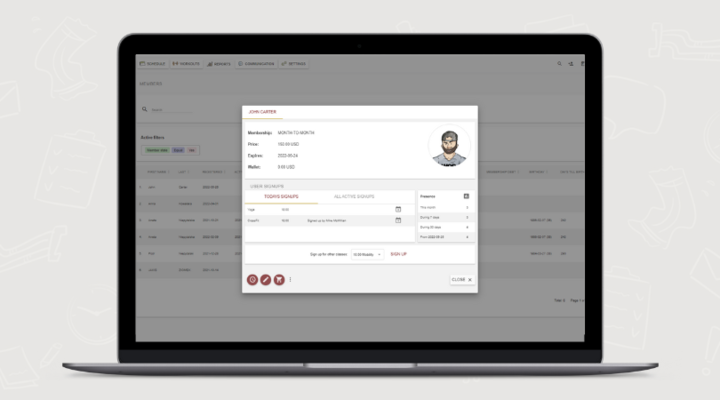
Benefits of using management software for personal trainers:
- Features and functionality: Assess whether it provides tools for crafting customized workout plans, monitoring client progress, and facilitating communication.
- Customization options: Prioritize apps that allow flexibility in tailoring workouts and other elements of the training regimen.
- User-friendliness: Opt for apps with intuitive interfaces and easy navigation to streamline your experience. You can also learn how to create a fitness app with no-code fitness app builder.
- Client management tools: Seek features like client profiles, progress tracking, scheduling, and billing functionalities for efficient business organization.
- Integration capabilities: Ensure compatibility with other platforms such as your website, payment processors, or marketing tools for seamless operation.
- Support and resources: Choose apps offering robust customer support and comprehensive resources to assist you when needed.
- Pricing structure: Consider subscription fees, transaction charges, and additional expenses for premium features to make an informed decision and use gym billing software.
- Reviews and reputation: Explore feedback from fellow trainers who have utilized the app to gauge its performance and reliability.
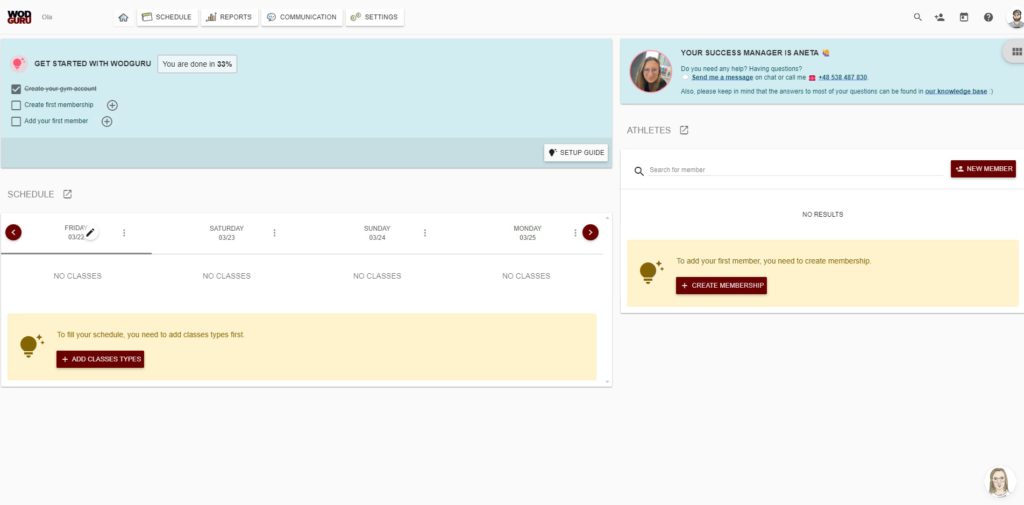
Online resources and educational materials
Personal trainers can take advantage of a wealth of online resources to stay current and improve their daily practice. Educational websites, professional association portals and video platforms offer in-depth articles, exercise tutorials and even sample workout programs. These tools can inspire creative workout plans, address specific client needs, and provide trainers with access to the latest fitness trends and techniques.

By integrating these resources into their daily routines, personal trainers can ensure they offer scientifically-backed, innovative, and varied training sessions that meet the evolving demands of their clients, thereby enhancing overall client satisfaction and retention.
Virtual and remote training opportunities
The rise of virtual fitness has opened new doors for both trainers and clients. Online personal training offers similar benefits to in-person sessions, but often at a more affordable rate.
Video conferencing platforms allow trainers to design and deliver personalized workout programs remotely, making sessions more accessible for geographically distant clients or those with busy schedules.
However, it’s important to consider factors like internet connection stability and access to necessary equipment when opting for virtual training.

How much should you spend on a personal trainer?
How much to spend on a personal trainer is an important decision that balances financial considerations with potential health and fitness benefits. It is generally recommended to first assess your financial situation and set a realistic budget for personal training. Remember that investing in a personal trainer is investing in your health, which can save you on health care costs in the long run.
What do you need to keep in mind?
- Balance cost with quality: look for trainers who are certified by reputable organizations such as NASM, ACE or ISSA, which signal a level of professionalism and expertise.
- Consider trainers with solid credentials or reviews that indicate successful client outcomes. Sometimes a more expensive trainer with a proven track record may offer more value in the long run than a less expensive but inexperienced trainer.
- Don’t hesitate to discuss pricing options. Many personal trainers are willing to negotiate rates, especially if you commit to a long-term package or agree to schedule sessions at less busy times.
- Ask about different package options can also reveal more budget-friendly options.
- Consider group training sessions, which reduce the cost per session while providing access to professional guidance.
- Look for trainers who offer hybrid programs that include a combination of in-person and group sessions, or a combination of in-person and online training sessions.

A personal trainer is an investment, and the initial expense can lead to bigger and faster results, potentially making it more worthwhile over time. Prioritize finding a trainer whose approach and personality match your fitness goals and preferences, ensuring that your investment is both enjoyable and effective.
Here are some important expenses to consider, when you think of hiring best personal trainers:
- Gym memberships and access fees: If your personal trainer works within a gym setting, you might need a gym membership to access the facility where the training sessions will take place. Gym memberships can vary significantly in cost based on the location, amenities, and exclusivity of the facility.
- Equipment or other supplementary costs: Personal training often requires specific equipment, such as weights, yoga mats, or resistance bands. While some trainers provide this equipment, others might require you to purchase your own, especially for in-home sessions or specialized training needs.
- Transportation costs: If your personal training sessions are not within walking distance, you may need to consider the cost of commuting to the gym or training facility. This includes public transit fares, fuel for personal vehicles, or even parking fees.
- Nutritional supplements and special diets: Trainers often provide nutritional advice and might recommend supplements or specific food products as part of your fitness regimen, which can add to the overall cost.
- Apparel and footwear: Appropriate workout clothing and footwear are crucial for safe and effective exercise. Investing in high-quality, durable workout gear can add to the initial costs but is important for comfort and performance during your sessions.
- Cancellation fees: Some personal trainers have strict cancellation policies. If you miss a session without providing adequate notice, you may be required to pay a cancellation fee by personal trainer management software.
- Insurance: In some cases, particularly if you’re engaging in high-risk activities, you might need additional health or accident insurance.
Final thoughts
- The cost of a personal trainer is variable and depends on factors like location, experience, and training style. In-person sessions typically range from $30 to $80 per hour, with an average around $50.
- Virtual training options can be a more affordable alternative, often starting at a lower rate than in-person sessions.
- When choosing a personal trainer, consider qualifications, experience, and compatibility in addition to cost. Consider if virtual training would be effective for you, given your goals and access to equipment.
- Consider how much personalized attention you will receive. One-on-one sessions may cost more than group sessions, but the individual focus could lead to faster and more specific results.
- Trainers with advanced certifications or specialties in areas like sports performance or rehabilitation typically charge more due to their enhanced expertise.
- Group training sessions tend to be more economical per participant than individual training sessions, offering a balance between personalized attention and cost.
FAQ
How much does it cost to become a certified personal trainer?
The cost of becoming a certified personal trainer can vary widely depending on the certification program chosen, the materials required and the specific credentials. The price of becoming a certified trainer is influenced by many factors, including:
- The type of certification program you want to bet on: The price of certification courses can range from a few hundred dollars to over a thousand.
- Most certification programs provide a variety of study materials, including textbooks, practice exams, online resources and workshops. These materials may be included in the overall course fee or may require an additional fee.
- The cost of taking the certification exam is often included in the course fee, but some programs charge a separate exam fee.
- Certifications typically need to be renewed every few years, which can incur continuing education credits and a renewal fee.
In general, prospective personal trainers should spend between $500 and $2,000 to become certified, depending on the comprehensiveness of the program and the additional resources selected. It is also worth considering the long-term costs associated with maintaining certification and expanding expertise through further education.
Is a personal trainer worth the cost?
The cost of hiring a personal trainer can be seen as high, but it should be weighed against the potential long-term benefits such as improved health, reduced risk of chronic diseases, better mental health, and possibly reduced healthcare costs. For many, these benefits justify the investment, especially if it helps them make significant, sustainable changes to their health and fitness.
Ultimately, whether a personal trainer is worth the cost depends on your specific needs, how you value the benefits listed above, and whether you can achieve similar results through self-guided methods. If the guidance, accountability, and expertise of a personal trainer significantly contribute to reaching your health goals, then the investment can be considered worthwhile.
How to find personal trainer prices near you?
How expensive is a personal trainer? Finding personal trainer prices near you involves a mix of research, evaluation, and understanding the value they offer beyond just the cost.
- Start by searching online for personal trainers near you. Use search engines, local business directories, or fitness-related websites. Many trainers and gyms list their pricing structures online.
- Visit local gyms and fitness centers. These places often have personal trainers on staff and provide information on session costs, packages, and membership fees that include personal training services.
- Check out social media platforms and specialized fitness apps where personal trainers advertise their services. These platforms often provide transparent pricing information and promotional offers.
- Word of mouth can be a reliable source. Ask friends, family, or coworkers for recommendations. They can provide insights into the costs and the effectiveness of trainers they’ve worked with.
- Many personal trainers offer free initial consultations. These meetings can be a great opportunity to discuss their rates, training philosophies, and the specific services they offer before committing.
What are the advantages and disadvantages of having a personal trainer?
Pros:
- Customized Programs: Tailored training that fits your specific health conditions, fitness level, and goals.
- Expert Guidance and Technique Correction: Ensures exercises are performed correctly to maximize effectiveness and minimize injury risks.
- Motivation and Accountability: Having scheduled sessions and someone to push you can significantly enhance your commitment and effort.
- Efficiency: Trainers can make your workout more efficient, helping you achieve results faster than working out on your own.
- Variety and Creativity in Workouts: Keeps training interesting and challenging by introducing new exercises and formats, preventing workout plateaus.
- Emotional and Psychological Support: Trainers often act as unofficial therapists, listening to your concerns and boosting your confidence.
- Flexible Scheduling: Personal trainers often offer flexible scheduling to accommodate your lifestyle.
Cons:
- Cost: Hiring a personal trainer can be expensive, potentially limiting access for those with tighter budgets.
- Dependency: Some clients may become dependent on their trainer for motivation and direction, struggling to exercise independently.
- Varied Quality: The quality of personal trainers can vary widely. Finding the right trainer requires effort and sometimes trial and error.
- Time Commitment: Scheduling regular sessions and traveling to the gym or meeting place can be time-consuming.
- Potential for Mismatch: Personality or philosophy mismatches between the trainer and client can impact the effectiveness of training and overall experience.
- Limited Privacy: Working out with a trainer, especially in a gym setting, can mean less privacy than solo workouts.
Related articles
How to Start a Personal Training Business in 2024 (Step-By-Step Guide)
Best Personal Trainer App in 2024 (Tried & Tested)
30+ Steps How to Get Personal Training Clients (with Examples)
10 Personal Training Templates to Save Your Time
Motivate Gym Members (6 Ways How to Motivate People to Exercise)

